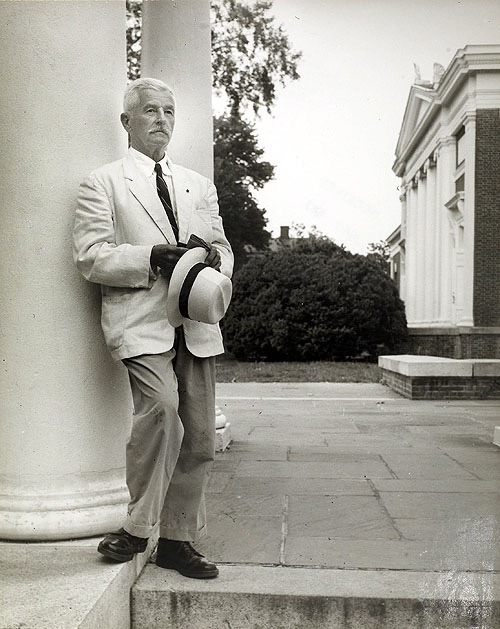Shirtless in shorts, Hollywood scriptwriter William Faulkner basks in the California sun. Wearing sunglasses and legs crossed, he is the very picture of ease in this photo. But Faulkner is still Faulkner. His pipe juts from his mouth, his wrinkled socks are halfway up his calf, and a typewriter sets on a small table in front of him.
This is a good example of taking the boy out of Mississippi, but not taking the Mississippi out of the boy. But to think that Faulkner wasn’t conscious of how he looked on that day is to misunderstand a man who crafted his public persona as carefully as his prose.
Years before this venture to Hollywood, Faulkner already understood the power of the right clothes. When the Great War raged in Europe, a young William Faulkner went to Canada to join the RAF. He lied on his paperwork in order to be perceived as British, even affecting an accent. The war ended only months later. Faulkner was discharged while still in training, no longer needed. On his way out of town, Faulkner purchased an officer’s dress uniform and returned to Oxford, Mississippi. Back home, he regaled everyone with tales of his imaginary combat exploits and war injuries.
Photographs typically show Faulkner well dressed in jacket, tie, and white pocket handkerchief. One of my favorite photos shows him in striped tie and relaxed white jacket with Optimo Panama hat in hand, leaning against one of Jefferson’s famous University of Virginia columns. In this photo the trademark pipe is absent, but we think of it all the more strongly because it is not there.

Photo by Ralph Thompson
Although always teetering on the brink of financial ruin, Faulkner projected the image of the Southern squire. This was especially true of Faulkner during his years as University of Virginia writer-in-residence late in life. In the more aristocratic Piedmont South, Faulkner let the Anglophilia that first appeared during his Canadian RAF days have free rein.
This is especially obvious in his embrace of the fox hunt and the clothing that accompanied it. Throughout his life Faulkner was at home in the tweedy writer look, but during his fox hunting days he often drifted toward a more structured English cut, even bringing out a bowler while blowing a hunting horn.
Faulkner ultimately went “full fox” by being not only photographed in top hat and hunting pinks, but even having his portrait painted wearing them. That portrait still hangs at his home Rowan Oak in Oxford, Mississippi.
Well familiar with how to create a narrative, Faulkner told his own story with clothes that reflected his roots, his occupation, and his aspirations.